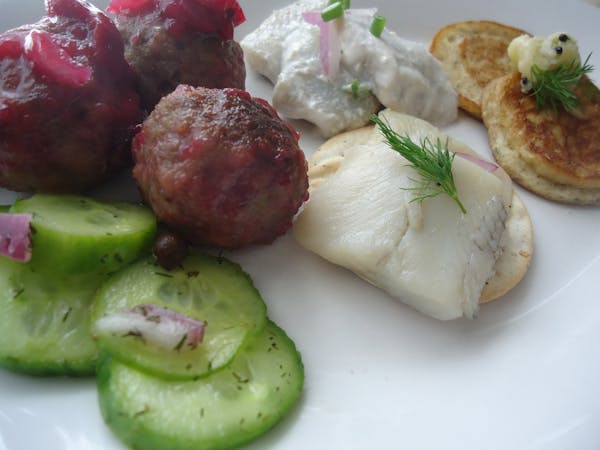Swedish buffet history
Smörgåsbord (bread and butter table) is the obese grandchild of a sexy Swedish grandmother known as the bränn- vinsbord (the burning wine or spirits table). Brännvinsbord was an appetizer course of bread and butter served with beer and brandy. Its origins date back to the 16th century when wealthy Swedes whetted their appetites at the spirits table before feasting at elaborate banquets. Aquavit and salted and cured fish, meats and cheeses were later added.
By the 1880s, travel by train increased across Sweden, as did the need for lodging and public dining. The brännvinsbord tradition grew into smörgåsbord with a variety of cold and hot, fresh and preserved ingredients that were served family-style, as a traveler's meal.
Its popularity continued to grow until World War II when it was prohibited, due to food shortages. Reinstituted in 1949, the smörgåsbord morphed into an array of tables overflowing with Swedish specialties.
Today the order and etiquette at a traditional smörgåsbord mean diners leave their seats to collect foods from a progression of tables: the herring table, fish course, salad and cold cuts, hot dishes and finally dessert and coffee.
PATRICE JOHNSON
Singing, ceremonies and straw hats: Olympics opening ceremony in Tahiti centers Polynesian culture

Three 101-year-old friends recall fond memories in 1940s Alexandria
Celine Dion makes musical comeback at Paris Olympics with Eiffel Tower serenade

